Share this news on:
Previous
08 Sep 2024
3 min read
Brown food is notoriously one of the most tricky food styling challenges any food photographer will face. Whether it’s chocolate photography, baking photography, meat photography, we all wonder why the most tasty food is the hardest to capture well.
In this post, I’m breaking down my favourite chocolate photography tips (along with other pesky brown foods), so you can approach your shoots more confidently, and nail that food styling.
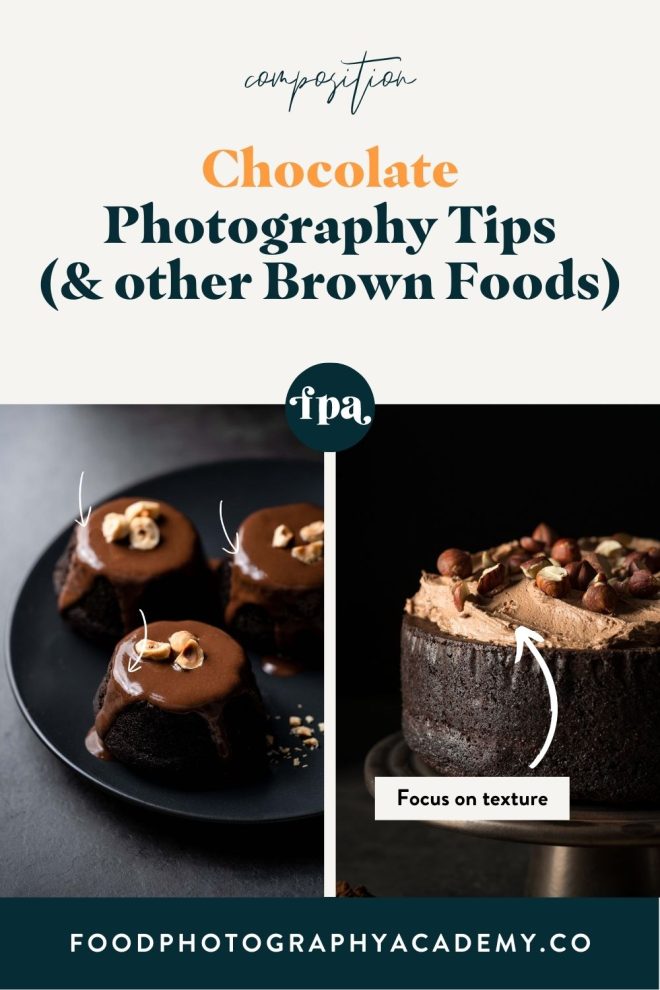
To help you get started, I’ve created you a PDF with my Top 10 Food Styling Tips for Food Photographers. Click below to grab your free guide now
If you’d prefer to watch, then hit play on the video below, and let’s get right into it!
Chocolate photography and other brown food photography (such as baking photography) pose a challenge to us as photographers, because these colours are not typically seen as “appealing”. Even though the food itself might be delicious, brown is quite a flat and… well boring colour.
As photographers we need to be able to bring dimension and contrast to these brown food photos, and there are a few food styling tips we can use to help us do that better.
So let’s dive right into the tips!
Photographing chocolate can present similar challenges to photographing black objects: a total lack of detail that no amount of increased exposure or more powerful lighting will change. And just as when photographing black, the solution here is to create specular highlights – i.e. direct reflections of your light source – on the food itself.
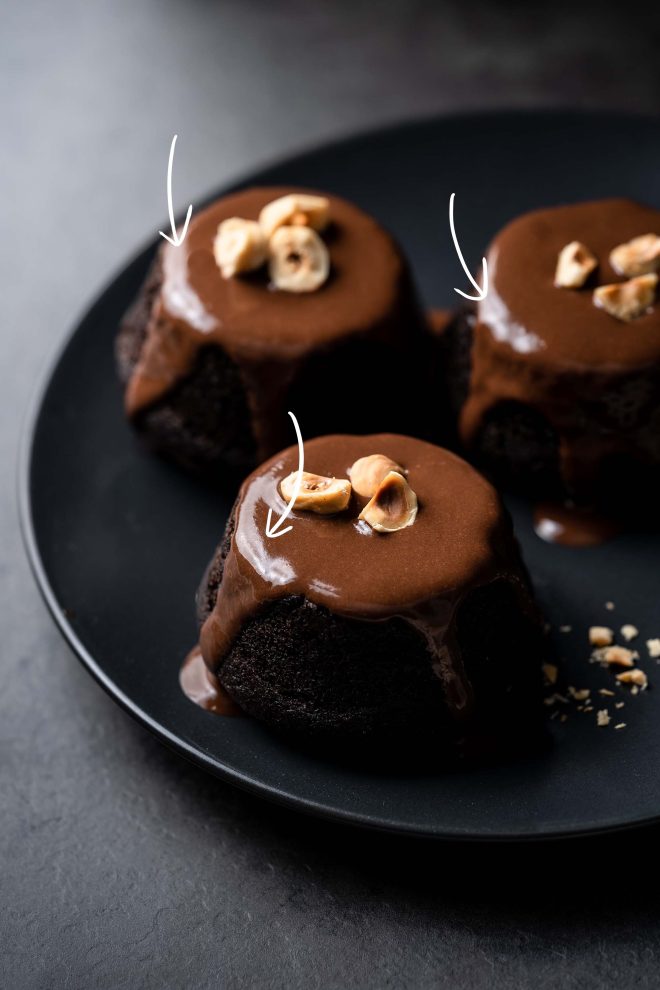
The strong highlights you can see in the chocolate ganache above are simply reflections of my soft box. If it wasn’t for these, the image would be totally flat and the chocolate would lack all texture and detail.
Specular highlights are a great way of adding life to any boring but reflective subject – chocolate included, and one of my favourite dark and moody lighting techniques for chocolate photography!Capture Texture
Everyone loves cookies, cakes, and bread. But let’s be honest, cookies don’t always make for the most exciting of baking photography subjects. The secret to shooting simple brown foods such as this is to concentrate on texture.
Emphasising texture is all about clever use of lighting.
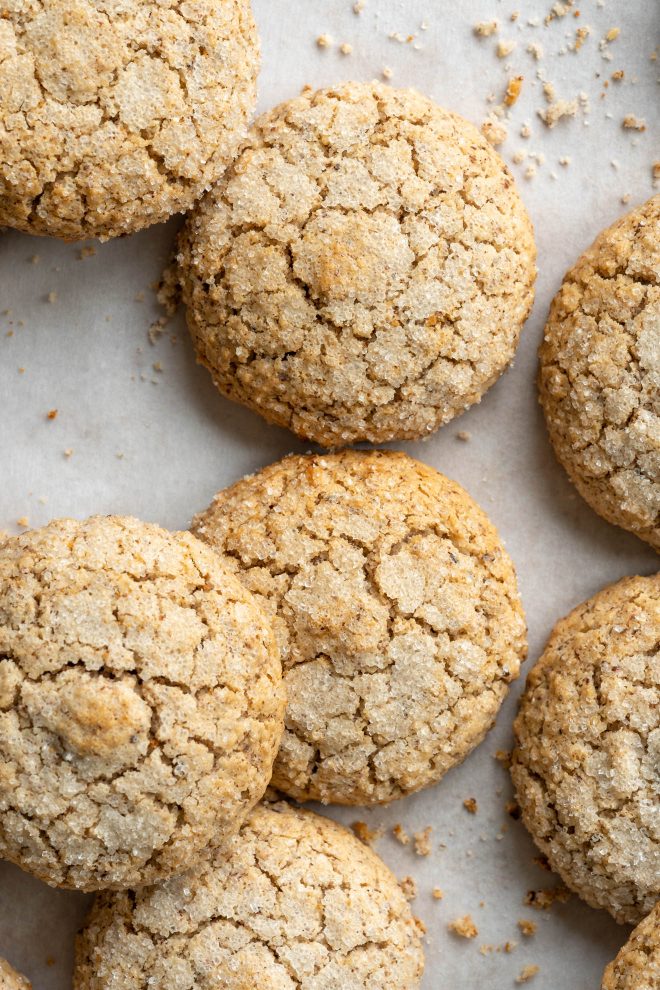
For the cookies above, I played around with the angle and hardness of the light, positioning it slightly lower than I normally would, so as to pull out as much of the texture as possible. This helped to break up the otherwise monochrome cookies and gives them a nice crunchy and crumbly look.
On the close-up image, I used my macro lens to capture the cracks and sugar crystals in all their mouthwatering detail.Create Layers
Another really good way of adding interest to baking photography and other brown foods is to create a feeling of greater depth by layering. Just because interest is lacking in one aspect of an image – in this case colour – doesn’t mean that all the other elements need to be one-dimensional too.
When faced with any monochrome subject, layering can really help to add a feeling of increased depth, with different elements sitting on different planes within the shot.
For example, let’s take a look at this pie straight out of the oven, sure, it’s delicious, gooey and has the perfect crust. But it looks a bit… boring and flat.
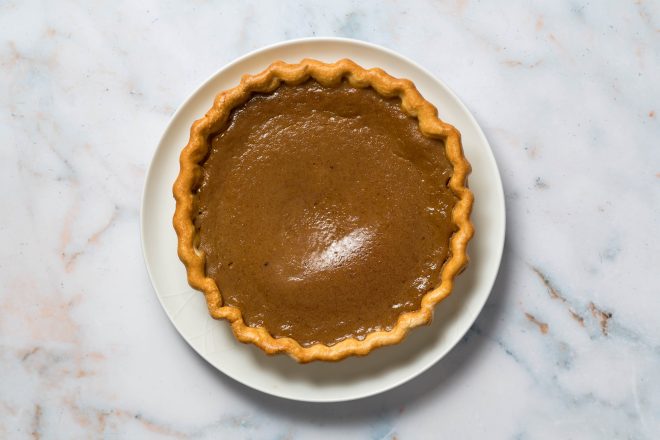
So let’s take a look at how layers made all the difference to the final shot.
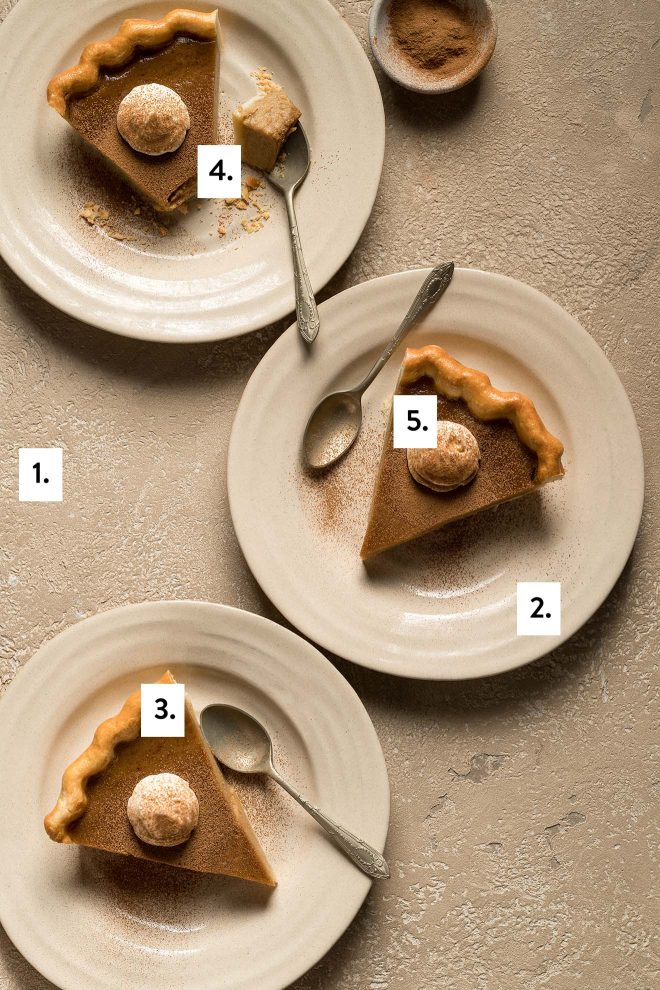
A few spoons and a little bowl of cinnamon and this scene is complete. If we compare this final photo to the initial plain pie, you can see the difference that these simple layers made to this shot.
Want to get more of my food styling tips? Download my free PDF guide with 10 of my best food styling tips!
If you’re struggling to make brown foods look good, you might simply be approaching things from the wrong camera angle. Turn the dish around; shoot it from above; even from below. If it’s a cake, bread, or other baked item that can be cut open, what does it look like on the inside? Maybe revealing the interior will add that extra degree of interest that makes the shot come to life.
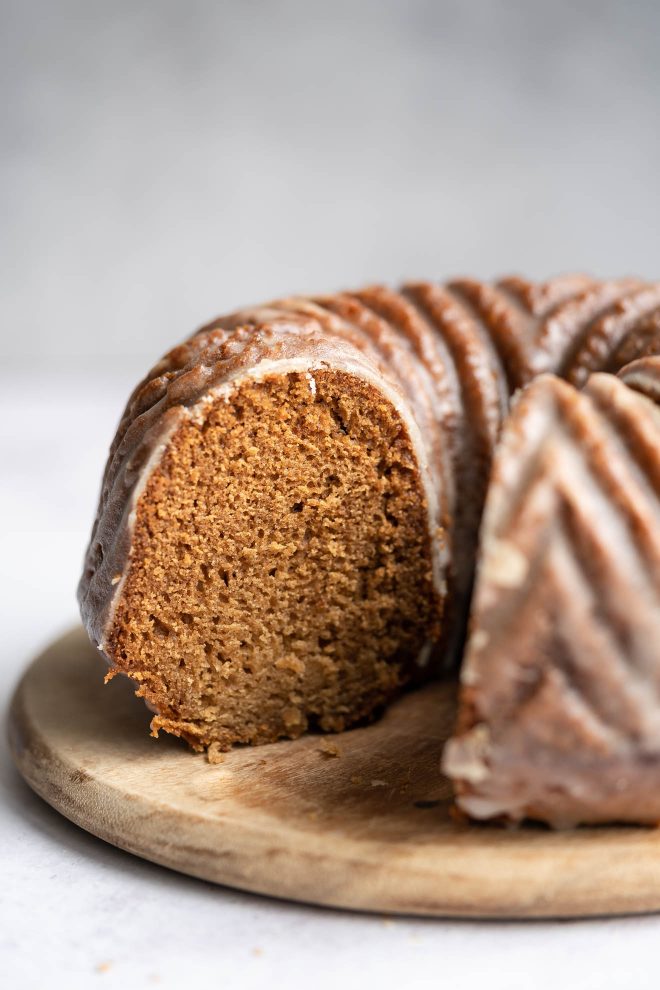
Brown foods needn’t be boring; the shot of this cake only came together when I cut into it, revealing all that beautiful texture inside. Switching up your camera angle can transform your baking photography!
People who understand colour know that no single colour is truly beautiful on its own; rather it’s how colours are combined that makes them interesting.
Brown can look great with other browns (analogous colour palette), or with lighter shades within the same family; such as pale yellow or beige. Brown also looks beautiful when combined with just black, white, and shades of grey.
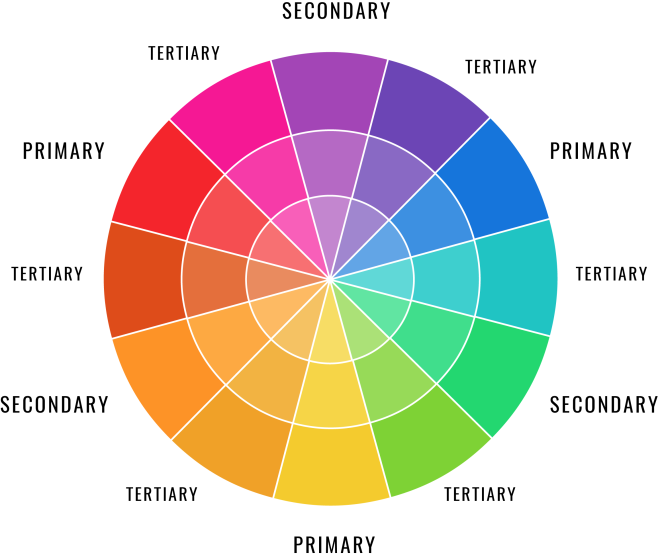
But if you know your way around a colour wheel, you’ll also know that the complementary colours for brown are in the bluish region (exactly which kind of blue will depend on the precise shade of brown you’re working with).
For example, baked goods and other brown foods can look truly stunning when photographed in combination with deep indigo or more cyan-heavy shades such as turquoise.
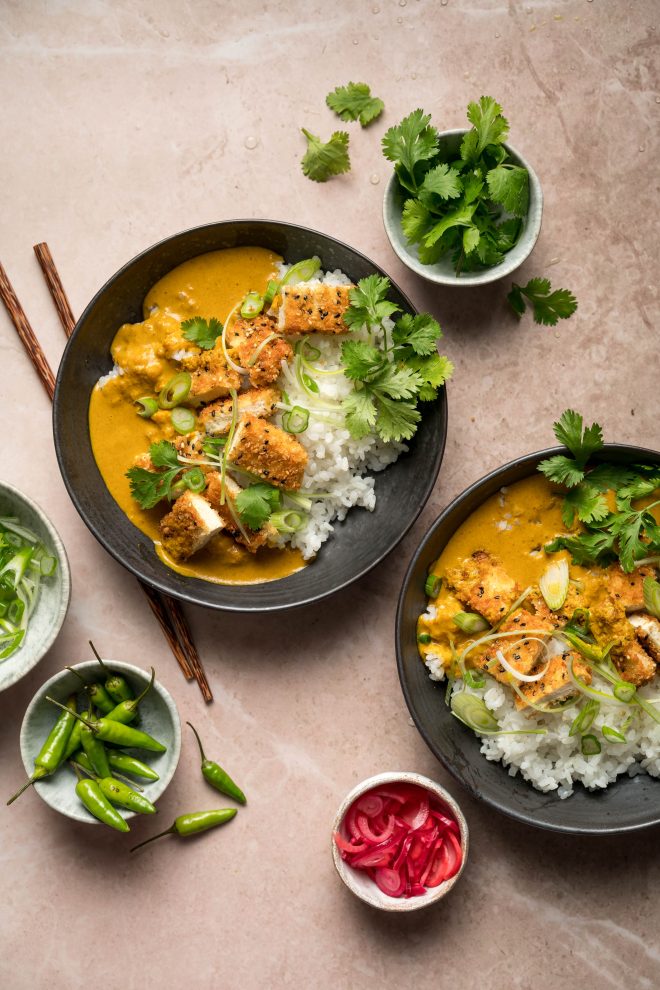
I love photographing brown foods on bold coloured backdrops, but if you don’t have a lot of backgrounds hanging around, really making the most of your garnishes can be a great way to add interest to your brown dish.
In this shot above, I made sure to include plenty of green garnish, by cutting the spring onion in two different ways for interest, and placing lots of fresh coriander on the dish, and in a little serving bowl to the side. The green chillies also give an idea of the flavour in the dish, while providing another complementary pop.
In need of inspiration? Try using an online colour palette tool such as Adobe’s Color Tool to see what other colours would work well with your brown dish.
Don’t forget to grab your free Top 10 food styling tips guide before you go!
What happens when the dish you’re shooting basically has no colour? Well… embrace the monochrome!
Now the shot becomes all about light, texture, and form. This way you get to ignore what doesn’t work, and concentrate solely on the dish’s good points – like it’s texture!
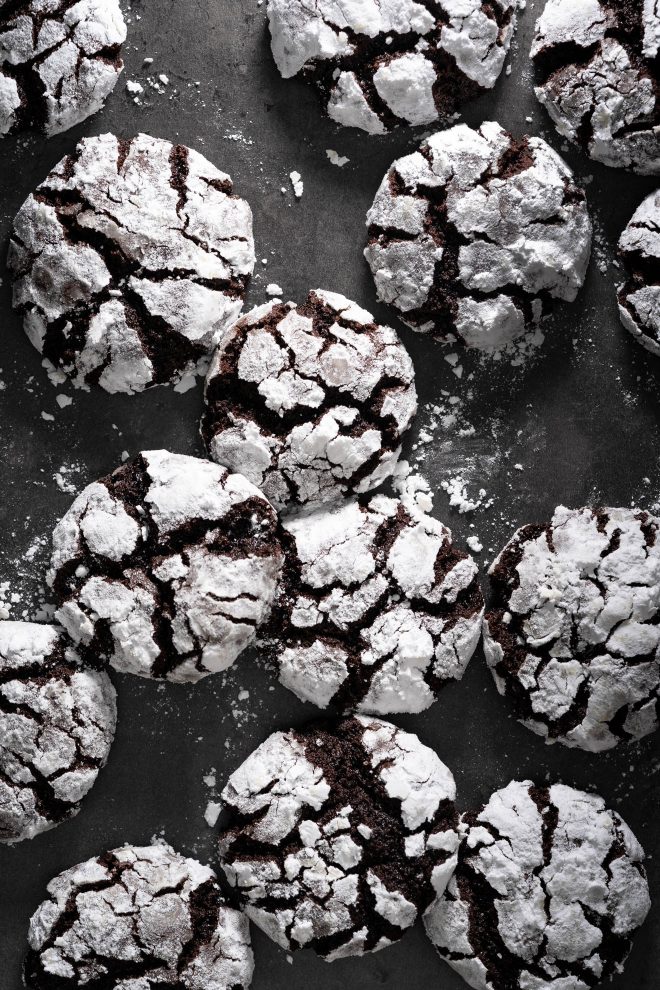
In this chocolate photo of crinkle cookies, the brown is barely even perceptible due to the darkness of the cocoa. Instead, I wanted to focus on the stark contrast of the black and white, picking up all the craters and texture from the icing sugar.
Shooting on a dark background allowed the food to stand out without distracting from the beautiful white powdered sugar.
Although chocolate photography and baking photography definitely present a few unusual challenges, they are not necessarily the insurmountable obstacles we’re often told they are. The evidence lies in the fact that baked goods can, and do, look amazing when photographed well.
By following the above tips, you should now have a very good idea about how to take pictures of baked goods and other brown foods without dropping your visual standards. Here’s hoping your next brown food shoot comes out looking all dark, rich, and sophisticated; and less like something you scraped off the bottom of your shoe. And don’t forget your FREE food styling tips guide!
food Photography Angles Another major consideration for food photography lighting setup is the angle of the light. There are several
Food photography lighting is critical if you want to get beautiful food images. Your goal is to create an image
Have you ever considered what the best lens for food photography would be? Food photography has become a popular genre
Food photography is one of the most popular genres of photography. But the top food photographers in the world have



